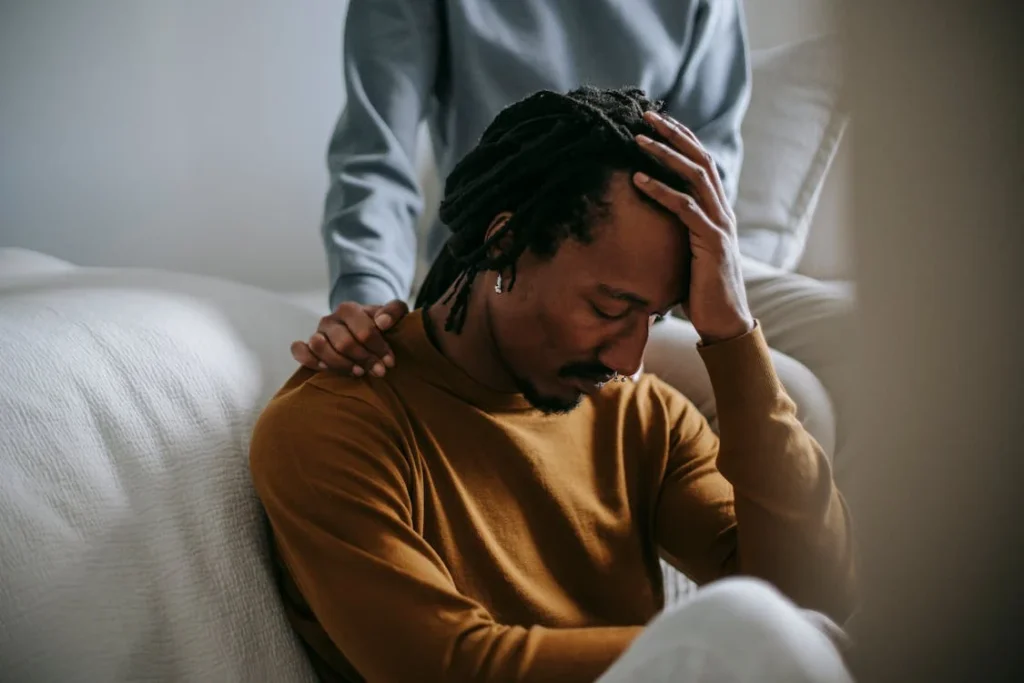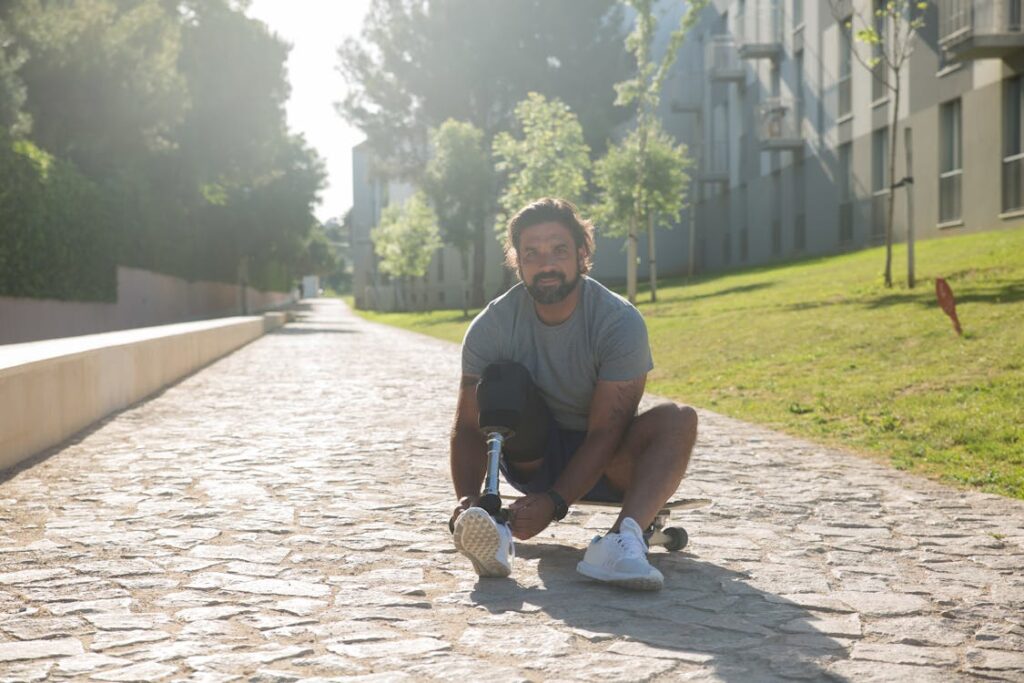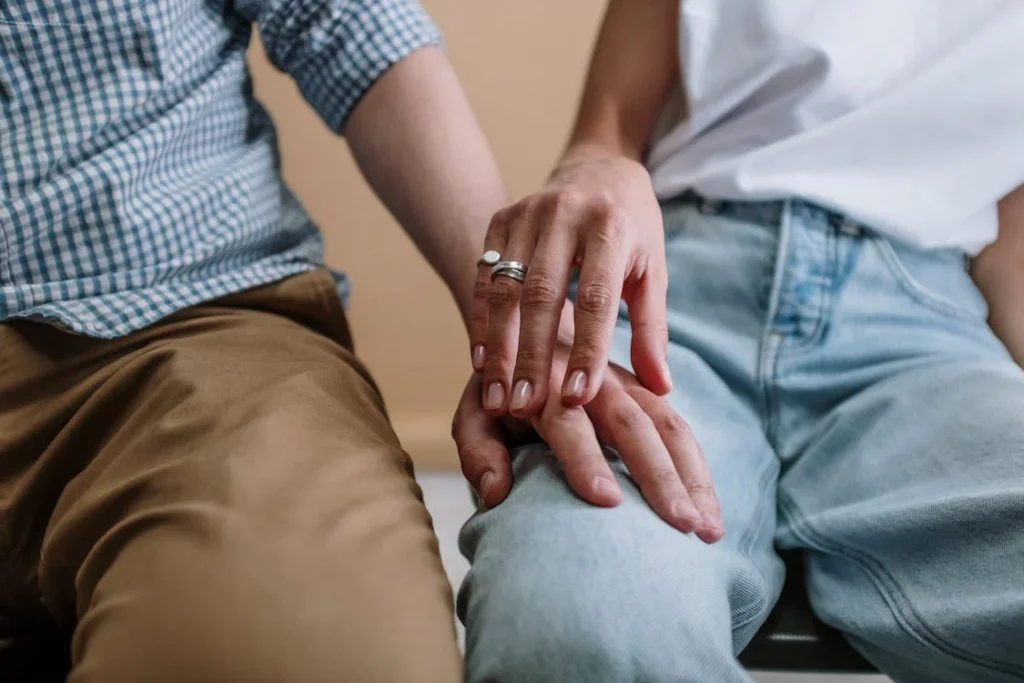Losing a limb is not just a physical change; it is an emotional journey that can be overwhelming. Many people focus on the physical recovery, but the mental and emotional impact is just as important. For some amputees, the trauma of limb loss leads to post-traumatic stress disorder (PTSD)—a condition that can cause intense fear, flashbacks, nightmares, and anxiety.
PTSD after amputation is more common than people realize. The sudden loss of a limb, the pain, the fear of the unknown, and the changes in daily life can all trigger deep emotional distress. Some amputees may struggle with disturbing memories of the event that led to the amputation, while others may develop anxiety about how their life has changed.
The good news is that PTSD is treatable. Recognizing the signs early and taking the right steps can help amputees regain control of their minds, emotions, and lives. This article will explore how to identify PTSD symptoms, why it happens after amputation, and effective ways to manage and overcome it.

Understanding PTSD After Amputation
Post-traumatic stress disorder (PTSD) is a mental health condition that occurs after a person experiences a deeply distressing or life-threatening event.
Amputation is not just a medical procedure—it is often linked to a traumatic incident, such as an accident, injury, or severe illness. The sudden loss of a limb can leave a person feeling helpless, frightened, or disconnected from reality.
Many amputees experience shock in the initial days or weeks after their limb loss. This is a natural reaction, but for some, the emotional distress lingers long after the physical wounds have healed.
When fear, anxiety, or painful memories continue to interfere with daily life, PTSD may be the cause.
Why Amputees Develop PTSD
PTSD after amputation happens for several reasons. The brain processes trauma in ways that are not always predictable.
A person may experience emotional distress from reliving the moment that led to their amputation, such as a car crash, workplace injury, or battlefield experience. The brain continues to replay these moments, making it hard to move forward.
For some, the physical pain of amputation, including phantom limb pain, triggers distress. Phantom limb pain occurs when a person feels sensations in the missing limb, which can be confusing and emotionally overwhelming.
If this pain is severe or persistent, it can add to feelings of frustration and helplessness.
Another major factor is the sudden change in identity and independence. Many amputees struggle with adjusting to life without a limb.
They may feel self-conscious, worry about how others perceive them, or fear losing their sense of control over daily tasks. This mental burden can be heavy and may develop into PTSD if not addressed.
Recognizing the Signs of PTSD
PTSD affects people differently, but common symptoms include:
- Flashbacks and Nightmares – A person may suddenly feel as if they are reliving the moment that caused their amputation. Nightmares may bring back painful memories, making it difficult to sleep.
- Severe Anxiety and Fear – Amputees with PTSD often feel constantly on edge, as if something bad is about to happen. This heightened state of fear makes it difficult to relax.
- Avoidance of Triggers – Some people avoid situations, places, or people that remind them of their trauma. For example, someone who lost a limb in a car accident may avoid driving or being around vehicles.
- Emotional Numbness or Disconnection – PTSD can make a person feel detached from others, even from family and friends. They may struggle to express emotions or feel uninterested in things they once enjoyed.
- Irritability and Mood Swings – Many amputees with PTSD experience anger, frustration, or sudden emotional outbursts. Small things may trigger intense emotional reactions.
These symptoms can develop soon after the amputation or months or even years later. If PTSD is left untreated, it can affect relationships, mental well-being, and overall quality of life. The key to healing is recognizing these signs early and seeking the right support.
How PTSD Differs from General Anxiety or Sadness
It is natural to feel sad, anxious, or frustrated after losing a limb. However, PTSD is more than just sadness—it is a persistent mental health condition that disrupts daily life.
Unlike general emotional distress, PTSD causes intense reactions to memories, thoughts, or situations related to the trauma. It can also make it difficult to trust others, form new relationships, or enjoy life again.
PTSD does not simply go away with time. Without the right coping strategies or treatment, it can worsen. The good news is that PTSD can be managed effectively with therapy, support, and self-care techniques.

Managing PTSD After Amputation: Steps Toward Healing
PTSD after amputation can feel overwhelming, but it is possible to regain control. Recovery does not happen overnight, but with the right approach, amputees can learn to manage their symptoms, reduce emotional distress, and rebuild confidence.
Seeking help, developing healthy coping mechanisms, and making small, consistent efforts can make a significant difference in mental well-being.
Seeking Professional Help: The Role of Therapy
One of the most effective ways to manage PTSD is through professional therapy. Speaking to a trained mental health professional can help amputees process their trauma, learn coping strategies, and regain emotional balance.
Cognitive Behavioral Therapy (CBT) is one of the most successful treatments for PTSD. This therapy helps people identify negative thought patterns and replace them with healthier ways of thinking.
Amputees with PTSD often have intrusive thoughts about their trauma, and CBT teaches them how to manage these thoughts so they no longer control their emotions.
Another effective therapy is Exposure Therapy, which gradually helps a person confront the situations or memories they have been avoiding.
For example, someone who lost a limb in a car accident may slowly work up to feeling comfortable around vehicles again. This therapy helps the brain reprocess fear and reduce anxiety over time.
Eye Movement Desensitization and Reprocessing (EMDR) is also a proven method for treating PTSD. This therapy uses guided eye movements to help the brain reprocess traumatic memories so they become less distressing.
Many amputees who struggle with flashbacks or severe anxiety find EMDR helpful in reducing their emotional response to past trauma.
Therapy is not a sign of weakness—it is a tool for strength and recovery. Many people who seek professional help find relief from PTSD symptoms and regain control over their emotions.
Building a Strong Support System
Healing from PTSD is much easier when a person has a supportive network of friends, family, and peers. Isolation often makes PTSD worse, while connection and understanding can make recovery smoother.
Talking to trusted loved ones about fears and struggles can be incredibly helpful. Simply having someone who listens and reassures without judgment can provide comfort.
Family members may not always fully understand what an amputee is going through, but their encouragement can still make a big difference.
Peer support groups are another valuable resource. These groups bring together amputees who have experienced similar challenges, creating a space where they can share experiences, advice, and encouragement.
Talking to someone who has been through PTSD and successfully managed it can offer hope and practical guidance.
At Robobionics, we strongly encourage amputees to seek out peer support groups as part of their recovery journey. Connecting with others who understand the emotional struggles of limb loss can provide motivation and reassurance.
If you are unsure where to find a support network, we can help guide you to the right resources.
Managing PTSD with Mindfulness and Relaxation Techniques
PTSD often puts the mind in a constant state of stress. Many amputees feel like they are always on high alert, waiting for something bad to happen. This can make it hard to relax, sleep, or focus on daily life.
Practicing mindfulness techniques can help bring a sense of calm and control. Mindfulness is about staying present in the moment, rather than getting lost in worries about the past or future.
Simple activities like deep breathing, meditation, or focusing on sensory experiences can help break the cycle of stress.
Deep breathing exercises can be especially useful during moments of anxiety. By taking slow, deep breaths and focusing on the sensation of breathing, the nervous system starts to relax, reducing feelings of panic.
Guided meditation or progressive muscle relaxation can also help amputees release tension and improve sleep. Many apps and online resources offer guided relaxation exercises that are specifically designed for PTSD and anxiety.
Physical movement is another effective way to manage PTSD symptoms. Gentle exercises like stretching, walking, or yoga can help release stress and improve overall well-being.
Many amputees find that adaptive physical activities help them reconnect with their bodies and regain confidence.
Regaining Control Over Daily Life
One of the biggest challenges after an amputation is feeling like life is no longer in control. PTSD can make simple tasks feel overwhelming, leading to avoidance and emotional withdrawal. Regaining control, even in small ways, can be a powerful step toward healing.
Setting small, achievable goals each day can help amputees rebuild confidence.
These goals don’t have to be big—they can be as simple as getting out of bed at the same time every morning, practicing with a prosthetic for a few minutes, or engaging in a social activity. Every small step forward is a victory.
Having a structured daily routine also helps reduce stress. When the brain knows what to expect, it feels safer and more in control. Creating a schedule that includes healthy meals, light physical activity, relaxation time, and social interaction can provide stability and balance.
At Robobionics, we know that adapting to life after an amputation is a journey, not a single step. That’s why we offer intuitive, user-friendly prosthetic solutions like Grippy™, designed to help amputees regain independence with ease.
If you’re struggling with PTSD and feel hesitant about prosthetic use, we can provide guidance and support to make the transition smoother.

Overcoming PTSD Through Long-Term Strategies
Managing PTSD is not about eliminating emotions or forgetting the past—it’s about learning how to live with the experience in a way that does not control daily life.
Recovery is a long-term process, and it requires patience, persistence, and self-compassion. The good news is that PTSD symptoms can become more manageable over time with the right strategies.
Reframing Negative Thoughts
PTSD often brings negative thoughts that feel automatic and uncontrollable. Many amputees struggle with thoughts like “I am not the same person anymore,” “I will never be independent again,” or “People see me differently now.”
These thoughts can make recovery harder by reinforcing fear and self-doubt.
Cognitive reframing is a powerful technique that helps replace negative thoughts with more balanced and positive perspectives.
Instead of thinking, “I will never be able to do what I used to,” an amputee can shift their mindset to, “I may do things differently now, but I am still capable and strong.” Instead of “People are staring at me,” they can think, “People are just curious, and that’s okay.”
Working with a therapist or support group can help develop these thought-reframing skills. Over time, changing the way the mind interprets situations can reduce anxiety, improve confidence, and make daily interactions easier.
Developing a Sense of Purpose
After an amputation, it is common to feel disconnected from life. Many amputees struggle with identity loss, wondering who they are outside of their injury or medical condition. One of the best ways to overcome this feeling is to find a new sense of purpose.
For some, purpose comes from helping others—mentoring new amputees, raising awareness about limb loss, or participating in disability advocacy.
Others find meaning through hobbies, career goals, fitness challenges, or creative pursuits. The key is to focus on what brings joy and fulfillment.
A sense of purpose shifts the focus from what was lost to what is still possible. It creates motivation and excitement for the future, helping amputees move forward with confidence.
Engaging in Adaptive Activities
PTSD can make people feel trapped in fear, avoiding situations that seem difficult or uncomfortable. One of the best ways to regain confidence is to engage in adaptive activities that encourage movement, socialization, and self-expression.
Many amputees find strength in adaptive sports, such as swimming, cycling, running with prosthetics, or wheelchair basketball. Others enjoy creative outlets like music, painting, or writing, which provide emotional release and mental relaxation.
Engaging in activities that bring enjoyment and a sense of achievement can reduce PTSD symptoms over time. It shifts focus away from trauma and toward new possibilities.
At Robobionics, we believe that prosthetics should not just restore function but also empower users to live active and fulfilling lives.
Our prosthetic solutions, like Grippy™, are designed to make movement natural and intuitive, helping users regain confidence in everyday activities.
Understanding That Healing Takes Time
One of the most important things to remember about PTSD recovery is that it is not a straight path. Some days will feel easier, while others will be more challenging. There will be setbacks, but setbacks do not mean failure.
Healing is about progress, not perfection. Learning how to manage emotions, reframe thoughts, and engage in meaningful activities takes time. It’s okay to ask for help, to take things slowly, and to celebrate small victories along the way.
No amputee should have to navigate PTSD alone. Whether through professional therapy, peer support, family encouragement, or personal growth strategies, there is always a way forward.

How PTSD Affects Relationships After Amputation
PTSD after amputation doesn’t just affect the individual—it can also impact relationships with family, friends, and even coworkers.
Emotional struggles, mood swings, and withdrawal from social interactions can create distance between an amputee and their loved ones. Recognizing these challenges and actively working on communication can help rebuild strong, supportive relationships.
Changes in Family Dynamics
Amputation often shifts family roles and responsibilities. A spouse, parent, or sibling may take on the role of a caregiver, which can create new challenges.
The amputee may feel guilty about needing help, while the caregiver may feel overwhelmed or unsure of how much assistance to offer. This change in dynamic can lead to frustration on both sides.
Open communication is key. Talking about needs, boundaries, and emotions can prevent misunderstandings. It’s also important for family members to encourage independence rather than unintentionally creating dependence.
Support groups for caregivers can also provide valuable guidance on how to help in a way that is empowering rather than limiting.
Struggles with Social Interactions
Many amputees with PTSD withdraw from social interactions because they feel self-conscious, fear judgment, or struggle with anxiety in public settings. Some may avoid gatherings, work events, or even everyday activities like shopping or dining out.
Friends and loved ones can help by offering encouragement without pressure. A simple invitation to join an outing, even for a short time, can remind an amputee that they are still valued and included.
If they decline, it’s important to respect their feelings while gently reminding them that they are always welcome.
Intimacy and Self-Image
For those in romantic relationships, PTSD after amputation can create challenges with intimacy and self-confidence. Many amputees struggle with body image, feeling that they are no longer attractive or desirable.
Fear of rejection or being seen as “different” can cause emotional distance in relationships.
Building confidence takes time, and it starts with self-acceptance. Speaking openly with a partner about fears and insecurities can strengthen the relationship.
Many couples find that professional therapy—either individual or couples counseling—helps in navigating these challenges together.
At Robobionics, we believe that emotional healing is just as important as physical recovery. We encourage amputees to seek both professional support and peer connections to help rebuild confidence in all areas of life.

The Connection Between Phantom Limb Pain and PTSD
Phantom limb pain is a phenomenon where an amputee feels sensations—sometimes mild, sometimes painful—in the missing limb.
While this is a physical condition, it is closely linked to PTSD, as it can trigger emotional distress, anxiety, and even flashbacks to the traumatic event that caused the amputation.
How Phantom Limb Pain Triggers PTSD Symptoms
For many amputees, the first time they experience phantom limb pain is unsettling. The sensation can feel like burning, tingling, or cramping in the missing limb.
When these sensations occur frequently or intensely, they can become a constant reminder of the trauma, making it difficult for the brain to move forward.
The unpredictability of phantom limb pain can also create a cycle of anxiety. Amputees may fear when the next episode will happen, leading to heightened stress and difficulty relaxing.
In severe cases, this can contribute to avoidance behaviors, where an amputee isolates themselves to prevent being triggered.
Managing Phantom Limb Pain to Reduce PTSD Symptoms
Since phantom limb pain is both a neurological and psychological experience, treatment often involves a combination of physical therapy, mental health support, and medical intervention.
Mirror therapy, where a person uses a mirror to “trick” the brain into seeing the missing limb, has been found to reduce phantom limb pain and help rewire neural pathways.
Relaxation techniques, including deep breathing and meditation, can also help reduce the intensity of pain episodes.
In some cases, pain management specialists may recommend medications or alternative treatments to help manage discomfort. The key is to address both the physical and emotional aspects of phantom limb pain to prevent it from worsening PTSD symptoms.
At Robobionics, we focus on designing prosthetic solutions that improve comfort and ease of use. If phantom limb pain is making it difficult to transition to prosthetic use, our team can provide guidance on rehabilitation strategies that make the process smoother.

The Role of Nutrition and Physical Health in PTSD Recovery
While PTSD is a mental health condition, physical health plays a major role in emotional well-being. Proper nutrition, movement, and sleep can significantly improve mood, energy levels, and the body’s ability to handle stress.
How Diet Affects PTSD Symptoms
What we eat directly affects brain function. Certain foods can either reduce stress and anxiety or make symptoms worse. Diets high in processed sugars, caffeine, and unhealthy fats can increase irritability and energy crashes, making PTSD symptoms harder to manage.
On the other hand, foods rich in omega-3 fatty acids, whole grains, lean protein, and fresh vegetables help regulate mood and reduce inflammation in the body.
Staying hydrated is also essential. Dehydration can increase feelings of anxiety and fatigue, making emotional regulation more difficult. Amputees dealing with PTSD should focus on maintaining a balanced diet to support both physical recovery and mental health.
Exercise and PTSD: A Natural Stress Reliever
Physical movement helps regulate brain chemistry by releasing endorphins, the body’s natural mood boosters. Exercise has been proven to reduce symptoms of PTSD by improving sleep, lowering anxiety, and providing a sense of accomplishment.
For amputees, traditional exercise routines may need to be adjusted, but adaptive fitness programs can provide excellent alternatives.
Activities like swimming, wheelchair sports, stretching, and strength training with a prosthetic can all help improve both physical and mental well-being.
Engaging in outdoor activities can also be beneficial. Studies show that spending time in nature reduces stress and promotes relaxation. Even a short time outside, such as sitting in a park or going for a walk, can help reduce PTSD symptoms.
At Robobionics, we encourage amputees to stay active in ways that feel comfortable and enjoyable. Our prosthetic solutions are designed to support mobility and freedom, making it easier to engage in physical activities that enhance mental well-being.
Conclusion
PTSD after amputation is a real and challenging condition, but it does not define your future. With the right support, therapy, and coping strategies, it is possible to regain control over your emotions, rebuild confidence, and live a fulfilling life. Healing takes time, and every step forward—no matter how small—is progress.
Seeking professional help, engaging in peer support groups, and practicing self-care can make a significant difference in managing PTSD. Physical activity, mindfulness, and healthy routines also play a crucial role in emotional recovery. The key is to be patient with yourself and recognize that you are not alone in this journey.
At Robobionics, we believe that true recovery goes beyond physical rehabilitation. Our advanced prosthetic solutions, combined with emotional support and community connections, empower amputees to regain both mobility and confidence. If you or a loved one is struggling with PTSD after an amputation, know that help is available. Reach out to us today to explore how we can support you in rebuilding your independence and well-being.



